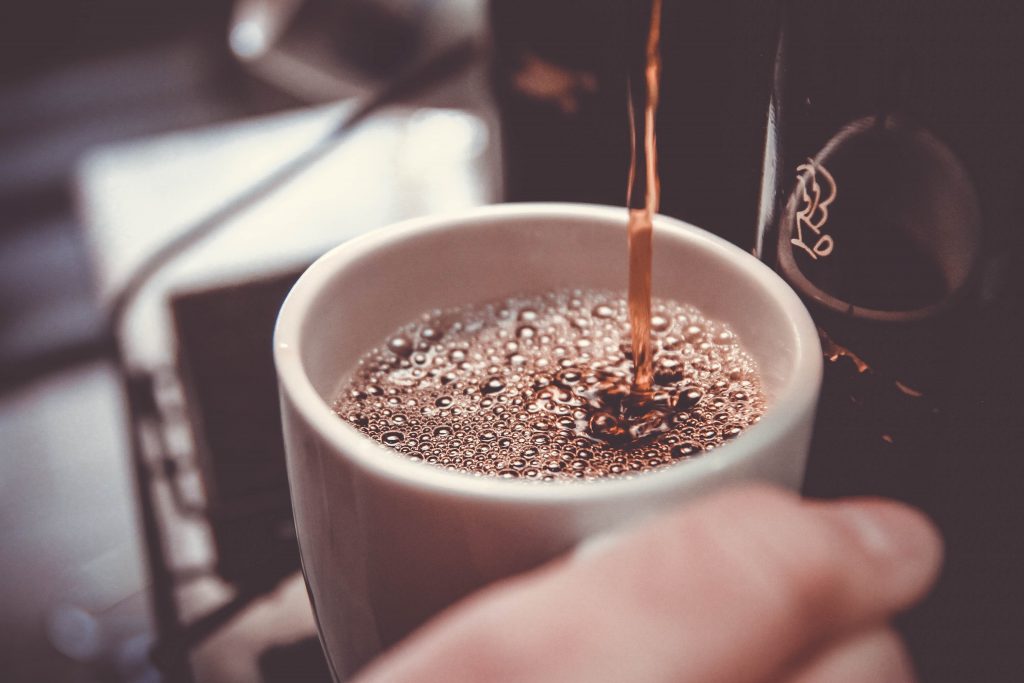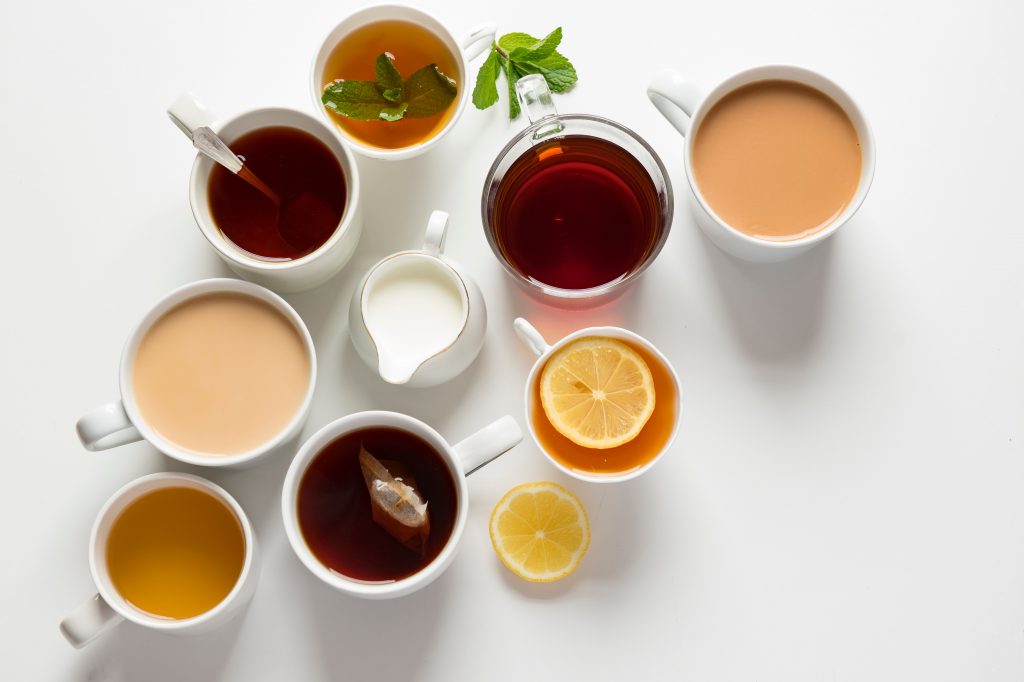Getting the most out of your caffeine intake
I think it goes without saying that the most fascinating and sought-after effect that caffeine intake offers the majority of its consumers is an increase in physical and/or mental performance. It’s one of the world’s favourite pick- me-ups.
Yes, many of us indulge in our daily coffee and tea rituals because of the familiarity and joy it offers, but it’s hard to deny that we also like the increased alertness and wakefulness. This is especially true for those of us in the food industry, who are all too accustomed to shift work whether that be pulling doubles, taking on the late shift, or sometimes doing both.
In this article, I will explain a little bit of the science behind caffeine and how it can be used strategically to help you stay fresh and focused at work while also being smart about portions to not only manage overall calorie intake throughout the day, but minimize any potential unwanted effects that could occur with excessive intake of caffeine containing products.
How caffeine works in your body:
Step #1: Drinking It
So what happens when you sip on your favourite drink? It doesn’t really matter if it’s coffee, espresso, tea, an energy drink or even some dark chocolate, caffeine works the same way, regardless of the source. So whether the caffeine is naturally occurring (in the case of coffee and tea) or added (in the case of sodas or energy drinks)—caffeine is caffeine!
Once it’s in your system, it is absorbed rapidly and it takes no more than an hour to reach peak levels in your bloodstream, which means it doesn’t take long for it to get to work.
Although it does vary from person to person based on bodyweight, genetics and other factors, caffeine generally stays in your system for several hours after ingestion.
Step #2: The Physiological Effect

So how does caffeine work once it enters your blood stream?
On a cellular level, caffeine works by targeting and blocking what are known as “adenosine receptors”(1).That might sound like a mouthful, but all you need to know is that these adenosine receptors are responsible for slowing things down in the body. They slow down heart rate, blood flow, muscle functioning and contribute to the tired feeling that many of us experience at different times throughout the day—think about that lag that you feel between 2 to 4 pm.
Obviously, at the right time (such as bed time), adenosine has a role to play. But that certainly isn’t useful right before the start of, or in the middle of a long shift.
That’s where caffeine comes in.
Because caffeine blocks these receptors that are responsible for slowing us down and making us tired, it stimulates us, helps us to feel awake, refreshed and focused. That’s exactly why it’s known as a stimulant, because it gets things going.
Practical implications: Caffeine at work

There is no such thing as a job in the foodservice industry, or in most industries for that matter, that doesn’t require a good level of mental focus and clarity to perform well. When you add in the demanding nature of the work, the late and long shifts, you also have a situation where lack of sleep and fatigue can creep in over the course of days, weeks or even months.
This is obviously where that shot of espresso, energy drink or cup of coffee comes in to save the day.
But contrary to popular belief, you don’t need a huge “hit” of caffeine to get the benefit of increased alertness and attentiveness it offers.
Effective portions may range as low as 40 mg (what’s found in a cup of green tea), 80 mg in a 250mL can of energy drink, or even up to 300 mg (a large cold brew) depending on how often you use caffeine and how your body metabolizes it, which varies from person to person(2).
People who drink caffeine regularly may need slightly larger amounts to get the energy they need. That also tends to be true of people who sleep less and are more tired, you may need more caffeine to get the desired effect. In general however, 75 mg caffeine is a level that will consistently work for most adults by increasing alertness and improving concentration(3).
Remember though, being mindful or smart about the amount of caffeine you consume, and when you consume it, is very important, especially when it’s getting close to bedtime.
It’s up to you to monitor how different portions of caffeine may impact you because how caffeine impacts your sleep will depend on individual factors (like genetics) and how much you’ve consumed(4).
How much caffeine is in your favourite food and beverages?
So what is considered a “large” dose of caffeine, and how closely should you be monitoring your intake to make sure that you get all the good stuff (wakefulness, enjoyment, alertness) and none of the bad (lack of sleep, anxiousness, jitters) that people associate with it?

Health Canada has determined that a safe, moderate amount of caffeine for the average healthy adult is 400 mg per day(5). As far as single doses go, the European Food Safety Authority says that 200mg intake poses no safety concerns(6). Depending on individual factors, such as tolerance levels and body weight, some people may be able to consume more in one serving without any negative consequences.
At this average consumption level, the risk of negative health consequences from caffeine intake is very low, but there are a few exceptions to consider:
- As per Health Canada, the safe, moderate number is lower for pregnant/breast feeding women and is set at 300mg per day.
- People who are caffeine sensitive may experience side effects from caffeine intake at levels below 400 mg a day. If you find caffeine causes restlessness, anxiety, nervousness, insomnia or stomach pain, you may fall in this category and need to reduce your caffeine intake.
So what does the caffeine content of some everyday products look like?
- 1 can of Cola (355 ml) – 40 mg
- 1 cup of tea (237 ml, average, among caffeinated varieties) – 40 mg
- 1 can energy drink (250 ml) – 80 mg
- 1.5 shots espresso – 80 mg
- 1 bar of dark chocolate (100g) – 81 mg
- 1 cup (237 ml) brewed coffee – 135 mg

Certain specialty drinks may have more, and the size obviously matters. A medium cup of coffee at a chain store, for example, is actually equivalent to two cups of home-brewed coffee.
It’s important to keep portion sizes in mind not only when calculating your daily caffeine intake, but more broadly when keeping your daily calorie intake balanced.
Why more caffeine isn’t always better

Caffeine plays such an important role in the daily lives of people in this and so many industries but too much of a good thing does not lead to better outcomes.
In order to understand why this is, let’s talk about something known as the Yerkes-Dodson law, which says that there is a specific relationship that exists between stimulation and performance.
We know caffeine stimulates us and allows to improve our performance at work by enhancing our ability to focus. This effect is especially important on days when we aren’t feeling stimulated enough at work, perhaps because of a lack of sleep.
But, stimulation only helps our performance up to a point.
If we are too stimulated, perhaps due to excitement over some event, or because we’ve had too much caffeine, performance suffers because we aren’t able to focus that well.
That’s exactly why playing with smart portions is so important to help you find that sweet spot in the middle that allows you to optimize performance, both at work and at play.
Caffeine intake beyond the workplace
Physical activity is a very important component of maintaining a healthy body and mind and allowing you to perform your best both in and out of the workplace.
For many of us, the before or after work hours tend to be the most likely time where we can fit this in. This means that we may either be tired from waking up early, or drained after a long day of work.

Caffeine has a role to play here too because in addition to helping us feel awake and stimulated, it’s known to improve our exercise capacity in both endurance and strength based workouts(7).
So, whether you want to go for a long run, or hit the gym, a nice cup of coffee beforehand, supported by ample water during and after your workout, could be just the thing you need to take your performance to the next level.
The goal for this article is to help empower you to understand how to make the most of your caffeine intake by being smart with portions and knowing how different levels of caffeine can lead to different effects on your body. Learning the right balance is the key to enjoying all the benefits that caffeine has to offer while minimizing or even eliminating the unwanted side effects. Cheers!
References
- S. Ferré Role of the central ascending neurotransmitter systems in the psychostimulant effects of caffeine J. Alzheimer’s Dis., 20 (2010), pp. S35-S49
- https://www.sciencedirect.com/science/article/pii/S0149763416300690#bib0365
- https://efsa.onlinelibrary.wiley.com/doi/epdf/10.2903/j.efsa.2011.2054
- https://www.ncbi.nlm.nih.gov/pubmed/26899133
- https://www.canada.ca/en/health-canada/services/food-nutrition/food-safety/food-additives/caffeine- foods/foods.html
- http://www.efsa.europa.eu/sites/default/files/corporate_publications/files/efsaexplainscaffeine150527.pdf
- https://www.ncbi.nlm.nih.gov/pmc/articles/PMC4213371/










